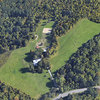Vision for New Scotland Hamlet to be clarified
NEW SCOTLAND — Spurred by a development proposal nearly a year-and-a-half ago, New Scotland is about to update parts of its zoning code.
Richard Long came to the town in June 2021 with a proposal for 72 apartments, now 52 condominiums, for his property at 2080 New Scotland Road, approximately a quarter-mile from Town Hall.
The issue for Long was the town’s zoning code wasn’t clear as to the allowable density of his proposed development. Representatives for Long at the time argued there were different housing standards in the hamlet district: one standard specified only one home per acre while another allowed a residential unit every 3,000 square feet.
In April, the town board introduced a local law to deal with the issue and was due to discuss the bill further at its August meeting, but had to push the discussion until September. There’s still a chance the hearing on the proposed zoning law could get pushed again, depending if the town board decides to incorporate changes suggested by the planning board.
The new law clears up the old law’s permitted uses.
Specifically, the new law would allow for multi-family housing in the hamlet center subdistrict with a special-use permit. But the housing would be allowed only as part of a mixed-use building and the units couldn’t be placed on the first floor of “any commercial or mixed residential/commercial structure,” according to the latest proposed version of the law.
This piece was added to the new law in support of the town’s vision for the hamlet center subdistrict: Bolstering town support of both business and mixed-used development. To that end, the new zoning would permit multi-unit housing in the hamlet center subdistrict so long as it’s part of a mixed-use building.
The proposal replaces the current law’s subsection on base density, which became an issue with Long Lumber.
The new law calculates base density in the hamlet district by using net buildable acreage. This clarifies how the base density is calculated for the hamlet districts by first subtracting the environmental constraints on a parcel (like wetlands) before determining how many residential units can be built on the entire parcel.
In all three hamlet subdistricts — the center as well as the expansion and development areas — the proposed law explicitly states 40 total units would be allowed. However, developers would be eligible for a density bonus “in return for providing certain amenities to the town.”
Among the eight amenities (allocated on a point system) that a developer can provide the town in exchange for additional units — up to a maximum of 10 — is dedicating 25 percent of total units to affordable senior housing; allowing public use of permanently preserved on-site open space; and a number of energy-related provisions.
A public hearing on the proposed zoning changes to the New Scotland Hamlet is set for Nov. 9 at 6:45 p.m.


